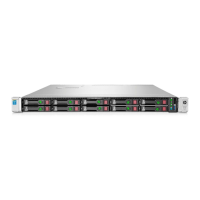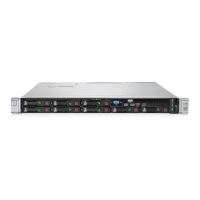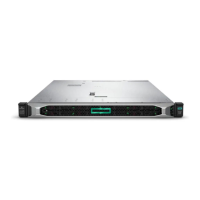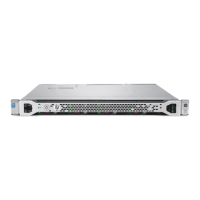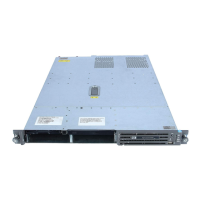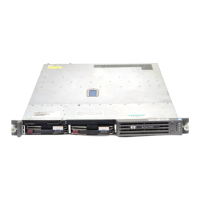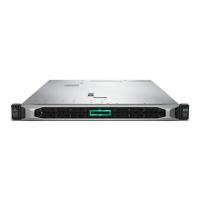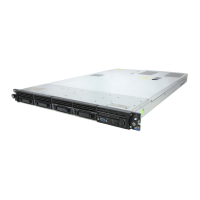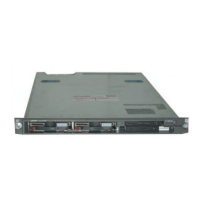What to do if amber LED blinks regularly on HP Server hard drives?
- JJoseph ConleyAug 2, 2025
If the amber LED on your HP Server's hard drives is blinking regularly, it indicates a problem. The suggested solution is to replace the HDD.
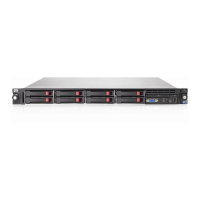




What to do if amber LED blinks regularly on HP Server hard drives?
If the amber LED on your HP Server's hard drives is blinking regularly, it indicates a problem. The suggested solution is to replace the HDD.
What to do if the hardware LED indicates a problem on HP ProLiant DL360 G7 Server NIC?
If the hardware LED on the NIC of your HP Server indicates a problem, check the NIC indicator LEDs. If the problem continues, consider ordering a replacement NIC.
What to do if the hardware LED indicates a problem on HP ProLiant DL360 G7 fan?
If the hardware LED on the fan of your HP Server indicates a problem, and the issue persists, it is recommended to order a replacement fan.
What to do if the hardware LED indicates a problem on HP ProLiant DL360 G7 memory DIMM?
If the hardware LED on the memory DIMM of your HP Server indicates a problem, and the issue persists, it is recommended to order replacement memory.
What to do if the hardware LED indicates a problem on HP ProLiant DL360 G7 DVD-RW drive?
If the hardware LED on the DVD-RW drive of your HP Server indicates a problem, perform Steps 3 and 4 in the System does not boot from the drive section. Also, perform all the steps in the Data read from the drive is inconsistent, or drive cannot read data and Drive is not detected sections. If the problem continues, it's recommended to order a replacement drive.
| Storage | Up to 8 SFF SAS/SATA/SSD drives |
|---|---|
| Form Factor | 1U Rack |
| Processor | Intel Xeon 5600 series |
| Memory | Up to 192GB DDR3 |
| Network | Embedded NC382i Dual Port Multifunction Gigabit Server Adapter |
| Power Supply | Hot-plug redundant power supplies (460W, 750W, or 1200W) |
| Expansion Slots | 2 x PCIe Gen2 |
| RAID Controller | HP Smart Array P410i |
| Network Controller | HP NC382i Dual Port Multifunction Gigabit Server Adapter |
| Management | Integrated Lights-Out 3 (iLO 3) |
| Operating System Support | Microsoft Windows Server, Red Hat Enterprise Linux, SUSE Linux Enterprise Server, VMware |
Identifies and describes the front panel components of the server.
Explains the function and status of front panel LEDs and buttons.
Identifies and describes the rear panel components of the server.
Explains the function and status of rear panel LEDs and buttons.
Identifies various components on the server's system board.
Details the server's DIMM slots and their numbering for memory configuration.
Explains the function of the system maintenance switch settings.
Describes the purpose and use of the NMI jumper for system diagnostics.
Introduces the server's status display LEDs for system health.
Explains LED status combinations for diagnosing system health events.
Describes the LEDs for SAS and SATA hard drives for status indication.
Identifies fan modules and their configurations within the server.
Provides steps for safely powering up and powering down the server.
Procedure for extending the server from its rack mount for maintenance.
Instructions on how to access and use the server's diagnostic display.
Steps to remove and install the server's access panel for maintenance.
Procedure for removing the BBWC battery pack or FBWC capacitor pack.
Steps to remove and install the server's air baffle.
Procedure to remove and install the PCI riser board assembly.
Information on HP installation services and rack planning resources.
Specifies space, airflow, and temperature needs for optimal server operation.
Details electrical power requirements and necessary grounding procedures.
Safety warnings related to rack installation and server stability.
Step-by-step guide for installing the server and initial configuration.
Methods for installing the server's operating system.
Instructions for installing processor and fan modules in the server.
Details on memory types, configurations, and DIMM installation.
Procedures for installing SAS and SATA hot-plug hard drives.
Information and steps for installing DVD-ROM or DVD-RW drives.
Information about installing the optional hard drive backplane.
Details about embedded and optional array controllers.
Instructions for installing a cache module on the system board.
Steps to install battery or capacitor packs for cache modules.
General procedure for installing PCIe and PCI-X expansion boards.
Information about the PCI thermal power option kit for high-power adapters.
Details on installing redundant hot-plug power supplies.
Instructions for installing and enabling a Trusted Platform Module.
General guidelines for server and hardware option cabling.
Cabling instructions for the hard drive backplane.
Cabling instructions for BBWC battery pack or FBWC capacitor pack.
Cabling instructions for DVD-ROM and DVD-RW drives.
Cabling instructions for the power button and Systems Insight Display.
Instructions for connecting PCI power cables.
Overview of SmartStart software and its scripting toolkit.
Introduction to the RBSU for server configuration.
How to use RBSU, navigate menus, and access boot options.
Explains Advanced Memory Protection (AMP) modes like ECC, Lockstep, and Spare.
Overview of ACU and ORCA for storage array configuration.
Procedure to re-enter serial and product IDs after system board replacement.
Details on ASR, ROMPaq utility, iLO 3, Erase Utility, and ROM support.
Overview of HP Insight Diagnostics and Integrated Management Log.
Guidance on installing and updating device drivers.
Tools for managing software versions and updates.
Information on ProLiant Support Packs (PSPs) for OS-specific bundles.
Overview of the Smart Update Firmware DVD and its contents.
Details on HP Smart Update Manager for firmware deployment.
Links to guides and pre-diagnostic steps for server problems.
What information to collect and how to prepare the server for diagnosis.
Overview of flowcharts for diagnosing server issues.
Flowchart for diagnosing server power-on issues.
Flowchart for diagnosing issues during Power-On Self-Test (POST).
Flowchart for diagnosing operating system boot failures.
Flowchart for interpreting server fault indicators and LEDs.
Information about the server's system battery and replacement procedure.
Federal Communications Commission notices and rating labels.
Canadian, EU, Japanese, BSMI, Korean, and Chinese compliance information.
Laser safety compliance information for optical devices.
Notices regarding battery disposal, recycling, and power cord statements.
Precautions to prevent damage from static electricity discharge.
Methods for grounding to prevent static discharge during handling.
Specifies temperature and humidity ranges for operation and shipping.
Lists physical dimensions and weight of the server.
Details the types of power supplies and their electrical characteristics.
Information on calculating power supply needs for hot-plug options.
Information to have ready before contacting HP support.
Contact details for HP support and authorized resellers.
Overview of HP's Customer Self Repair program and part categories.
Glossary of technical terms and abbreviations used in the manual.

